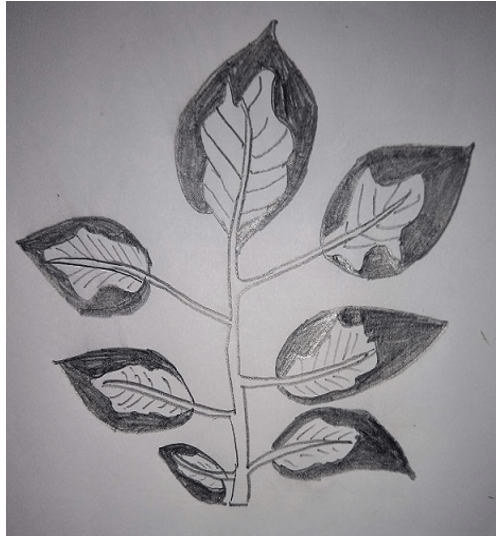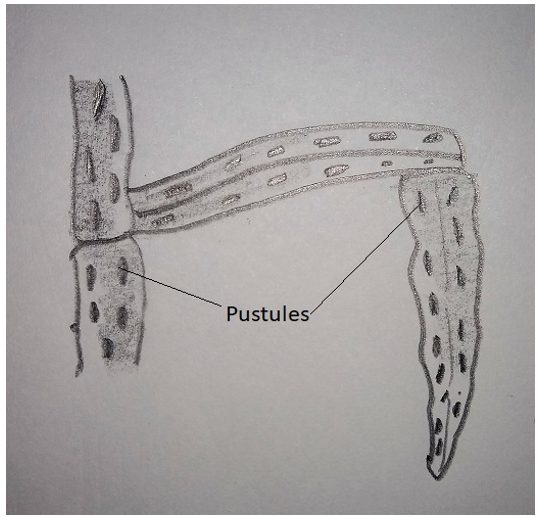This set of Class 12 Biology Chapter 9 Multiple Choice Questions & Answers (MCQs) focuses on “Strategies for Enhancement in Food Production” for NEET Preparation.
1. Disease-causing fungi are of ____ types.
a) Two
b) Three
c) Four
d) Five
View Answer
Explanation: Disease-causing fungi are of two types, obligate and non-obligate parasites. Obligate parasites can grow and multiply only in the association of their host plants. Non-obligate parasites become parasitic only when they come in contact with a suitable host.
2. Symptoms of fungal diseases may be localised or systemic.
a) True
b) False
View Answer
Explanation: Symptoms of fungal diseases may be localised i.e. restricted to an area of infection or maybe systemic i.e. spreading throughout the plant body.
3. Which of the following is not a method of controlling fungal diseases?
a) Antibiotics
b) Fungicides
c) Resistant varieties
d) Use of pathogen-free seeds
View Answer
Explanation: Fungal diseases can be controlled by roguing or removal of diseased parts, sanitation or destruction of plant debris, resistant varieties, use of pathogen-free seeds, bio pesticides if available and spraying with fungicides like Bordeaux mixture.
4. Witches’ broom is a characteristic symptom of diseases caused by ___________
a) Virus
b) Fungi
c) Bacteria
d) Nematodes
View Answer
Explanation: Witches broom is a characteristic symptom of diseases caused by fungi. The various symptoms of the fungal disease include necrosis, leaf spots, cankers, scabs, pustules, dieback, damping off, blights, rots, stunting, leaf curls, overgrowths, warts, galls, witches’ broom, wilt, rust, smut and mildew.
5. The following diagram represents the infected leaf of ________

a) Early blight of potato
b) Late blight of potato
c) Black rust of wheat
d) Smut of Wheat
View Answer
Explanation: The following diagram represents the infected leaf of Late blight of potato. It is caused by the fungus Phytophthora infestans. The disease kills the foliage, reducing the yield of tubers which are often are infected.
6. The following diagram represents the infected black stem of ___________

a) Rice
b) Wheat
c) Barley
d) Cocoa
View Answer
Explanation: The above diagram represents the infected black stem rust of wheat. Rusts of Wheat are brownish to blackish spore rich pustules which develop on the leaves and stem surface of Wheat. Rusts are generally caused by Puccinia.
7. Which of the following statements is not related to Loose smut of Wheat?
a) Caused by Ustilago
b) Attacks barley
c) Caused by Puccinia
d) A disease common in humid areas
View Answer
Explanation: Loose smut of wheat is a highly damaging smut disease that is more common in humid areas. The disease is caused by Ustilago. It also attacks Barley and a number of grasses.
8. Which of the following is a Non-characteristic symptom of Nematode disease?
a) Yellowing of Foliage
b) Distortion of leaves
c) Necrotic lesions
d) Blotches
View Answer
Explanation: Non- characteristic above-ground symptoms of nematode disease include reduced growth, yellowing of foliage, wilting and low-quality yield of the plant.
9. Fungicides can be used to treat diseases caused by Nematodes.
a) True
b) False
View Answer
Explanation: Measures used to control diseases caused by nematodes include disinfection of soil by steam, rotation of crops, fallowing, biological control agents, uncontaminated seeds, resistant varieties and spraying crops with nematicides.
10. Which of the following statement is not related to Root-Knot of Brinjal and Tomato?
a) Caused by Meloidogyne
b) The male worm is cylindrical
c) The female worm is circular
d) Site of infection produces gall
View Answer
Explanation: Root-knot of Brinjal and Tomato is caused by nematode Meloidogyne incognita. The male worm is cylindrical and female worm is pear-shaped. Infected cells proliferate near the site of infection produces spherical to elliptical swellings called galls.
Sanfoundry Global Education & Learning Series – Biology – Class 12.
To practice all chapters and topics of Biology for NEET Exam, here is complete set of 1000+ Multiple Choice Questions and Answers.
If you find a mistake in question / option / answer, kindly take a screenshot and email to [email protected]
- Practice Class 12 - Physics MCQs
- Practice Class 11 - Biology MCQs
- Practice Class 12 - Chemistry MCQs
- Practice Class 12 - Mathematics MCQs
- Check Class 12 - Biology Books
